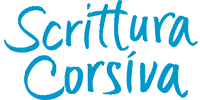Lines, squares or white space?
In our everyday lives, at work or at school, we nearly always write on paper or notebooks which can be of various types, according to our needs and purposes
Free-hand exercises to practice writing movements without attention to spatial arrangement can be done on vertical or horizontal surfaces, using different formats (ex. A3, A4, ) and types of paper, including wrapping paper.
Lined notebooks are useful for learning the correct proportions of letters and the spatial conventions involved in writing. The lined notebooks used in grades two and five of Italian primary schools are suitable for this purpose, whereas the notebooks with the narrow spaces used in grade three are not recommended because, according to many eye specialists, they stress the eyes and may induce visual deficits. In my opinion, notebooks with squared pages should not be used for writing because the vertical and horizontal grid can create perceptive confusion, a sort of visual background noise which disturbs the writer, especially if he or she has visual-spatial or learning disorders.
The size of the exercise book itself should also be taken into consideration. While the A4 “maxi” format might be handy for teachers who make ample use of photocopying, (an illegal practice in many countries) this notebook size may not be ideal for children in their first years of school. When little children have to stretch to reach the top of the page –even kneeling on their chairs or stand up to do so – they have less control of their movements. Their writing becomes wobbly or uneven because they have difficulties in modulating their force when reaching so far. Inevitably, this contributes to awkward, unstable body postures.
Choices concerning what children should write on or with should be based on general awareness about writing and its purposes. Scribbling a shopping list on a scrap of paper may not be an issue; however, transposing a history lesson by hand on squared or narrowly lined paper can be very stressful on the eyes. It is therefore advisable to know what’s on the market and carefully weigh the advantages and disadvantages of the products available before making a choice. In my opinion, choices should always be made in favour of the learner and not of the teacher.





